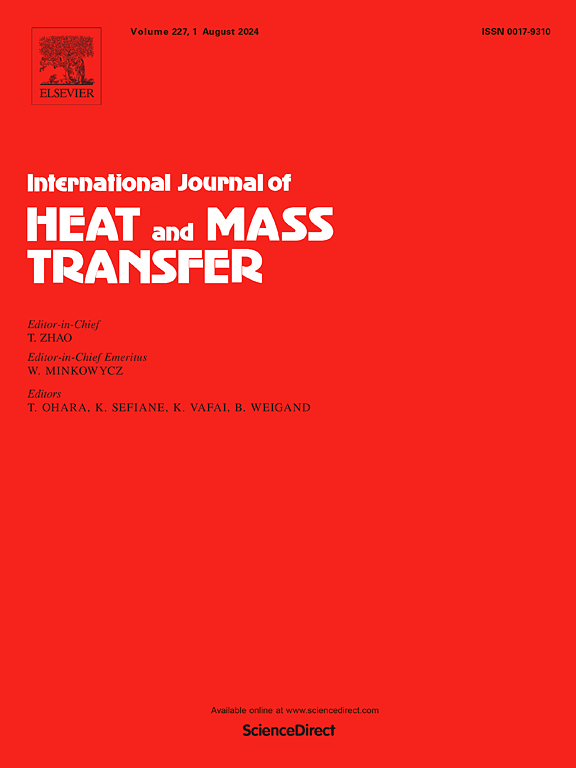A universal structure of neural network for predicting heat, flow and mass transport in various three-dimensional porous media
IF 5
2区 工程技术
Q1 ENGINEERING, MECHANICAL
International Journal of Heat and Mass Transfer
Pub Date : 2025-01-13
DOI:10.1016/j.ijheatmasstransfer.2025.126688
引用次数: 0
Abstract
Predicting heat, flow and mass transport properties in three-dimensional (3D) porous media is computationally and experimentally intractable owning to the complex morphological and topological characteristics of 3D porous media. To address this challenge, we develop a 3D transport field-coefficients-convolutional neural network (TFC![]() CNN) platform in which the training samples for the proposed TFC
CNN) platform in which the training samples for the proposed TFC![]() CNN platform rely only on transport field data of 3D sphere-packed structure calculated by lattice Boltzmann method. Then, the transport fields (including gas diffusion, flow, and temperature) of 3D porous media with six kinds of topological characterizations (e.g., sphere-packed, irregular, fibrous and curvature fibrous porous media, gyroid structure, and foam structure, respectively) can be predicted with a wide range of porosities. The corresponding transport coefficients are further obtained. In addition, the sample structure information self-amplification method is developed to enrich the number of training samples. Results show that the proposed TFC
CNN platform rely only on transport field data of 3D sphere-packed structure calculated by lattice Boltzmann method. Then, the transport fields (including gas diffusion, flow, and temperature) of 3D porous media with six kinds of topological characterizations (e.g., sphere-packed, irregular, fibrous and curvature fibrous porous media, gyroid structure, and foam structure, respectively) can be predicted with a wide range of porosities. The corresponding transport coefficients are further obtained. In addition, the sample structure information self-amplification method is developed to enrich the number of training samples. Results show that the proposed TFC![]() CNN platform can accurately predict the concentration, velocity, and temperature fields in various stochastic porous media with a wide range of porosities. The corresponding effective diffusivity, permeability, and thermal conductivity coefficients predicted by TFC
CNN platform can accurately predict the concentration, velocity, and temperature fields in various stochastic porous media with a wide range of porosities. The corresponding effective diffusivity, permeability, and thermal conductivity coefficients predicted by TFC![]() CNN platform are more accurate than those predicted by the empirical formulas. For validation model, the prediction time for velocity field in sphere-packed porous media is about seconds by TFC
CNN platform are more accurate than those predicted by the empirical formulas. For validation model, the prediction time for velocity field in sphere-packed porous media is about seconds by TFC![]() CNN platform, while the computation time for the same case takes several days with running on hundreds of cores for 318 million grids using LBM. This work can provide new insights to bridge the gap between a material microstructure and its macroscopic physical performance.
CNN platform, while the computation time for the same case takes several days with running on hundreds of cores for 318 million grids using LBM. This work can provide new insights to bridge the gap between a material microstructure and its macroscopic physical performance.
求助全文
约1分钟内获得全文
求助全文
来源期刊
CiteScore
10.30
自引率
13.50%
发文量
1319
审稿时长
41 days
期刊介绍:
International Journal of Heat and Mass Transfer is the vehicle for the exchange of basic ideas in heat and mass transfer between research workers and engineers throughout the world. It focuses on both analytical and experimental research, with an emphasis on contributions which increase the basic understanding of transfer processes and their application to engineering problems.
Topics include:
-New methods of measuring and/or correlating transport-property data
-Energy engineering
-Environmental applications of heat and/or mass transfer

 求助内容:
求助内容: 应助结果提醒方式:
应助结果提醒方式:


